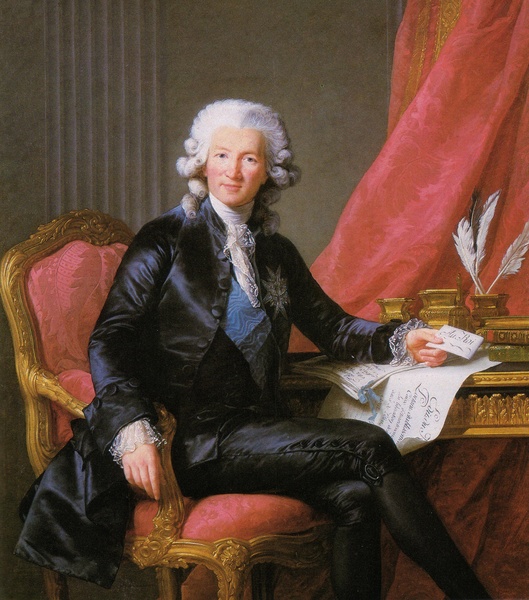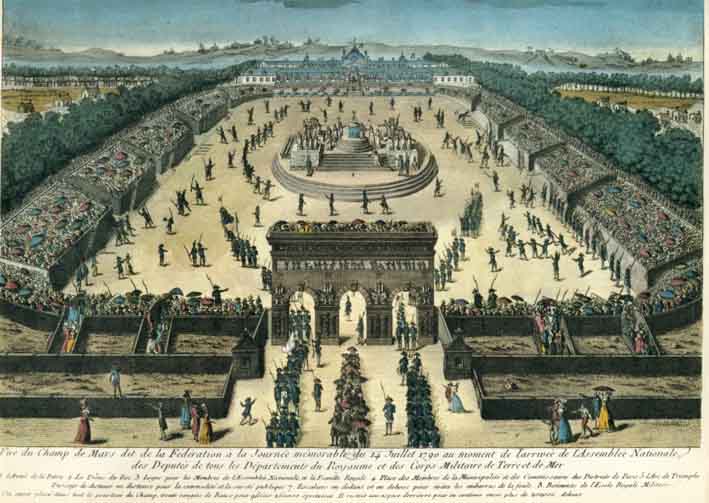.jpg) From
Constitutional Monarchy to Republic
From
Constitutional Monarchy to Republic
Read for discusison
in class: The
Declaration of the Rights of Man and the Citizen (26 August 1789)
in Censer & Hunt, 45-47,
Louis-Marie Prudhomme, “On the Influence
of the Revolution on Women” (1791), in Censer & Hunt,
79-81, and Marie Olympe de Gouges,
The Rights of Woman (1791) [Canvas]
I. Introduction: Jacques-Louis David’s Tennis Court Oath
Image:
Inaugural Ceremonies at the Estates General, 5 May 1789
Image: Jacques-Louis David, The
Tennis Court Oath
Text: An Annotation of The Tennis
Court Oath
Image: The Tennis Court as it appears today
II. Dismantling the Seigneurial
Order in Rural France
A. Pressure from Below: The ‘Great Fear’ and the Storming
of the Bastille
B. The August Decrees and the Declaration of the Rights of Man
Excursus: Top Ten Grievances on the Eve of the Revolution
Image: An Eighteenth-Century View of the Bastille
Image:
The Storming of the Bastille, 14 July 1789
Text: The August Decrees (1789)
Image: The Salle du Manège, seat of the National Assembly
III. Disussion: The Declaration,
Prudhomme, and Marie Olympe de Gouges
Image right: Jean-François
Carteaux (1751-1813), Louis XVI, roi de France (1791).
306 cm x 322 cm. Musée nationale du Château de Versailles.
This equestrian portrait of Louis XVI is typical of the complex
blend of revolutionary and monarchical symbolism that characterized
the first phase of the revolution in France. The king's equestrian
pose continues an ancient mode of representing royal authority
visually. Louis also wears medallions of the Orders of Saint-Esprit
and of the Golden Fleece. But his uniform is red, the color of
the city of Paris, not white, the color of the French royal dynasty.
In his right hand, Louis carries an épée with the
legend La Loi, as if to suggest that the king's authority
is no longer absolute, but an executive office in the service
of a sovereign legislature. Image source: L'Histoire
par l'Image.

.jpg)
.jpg)

